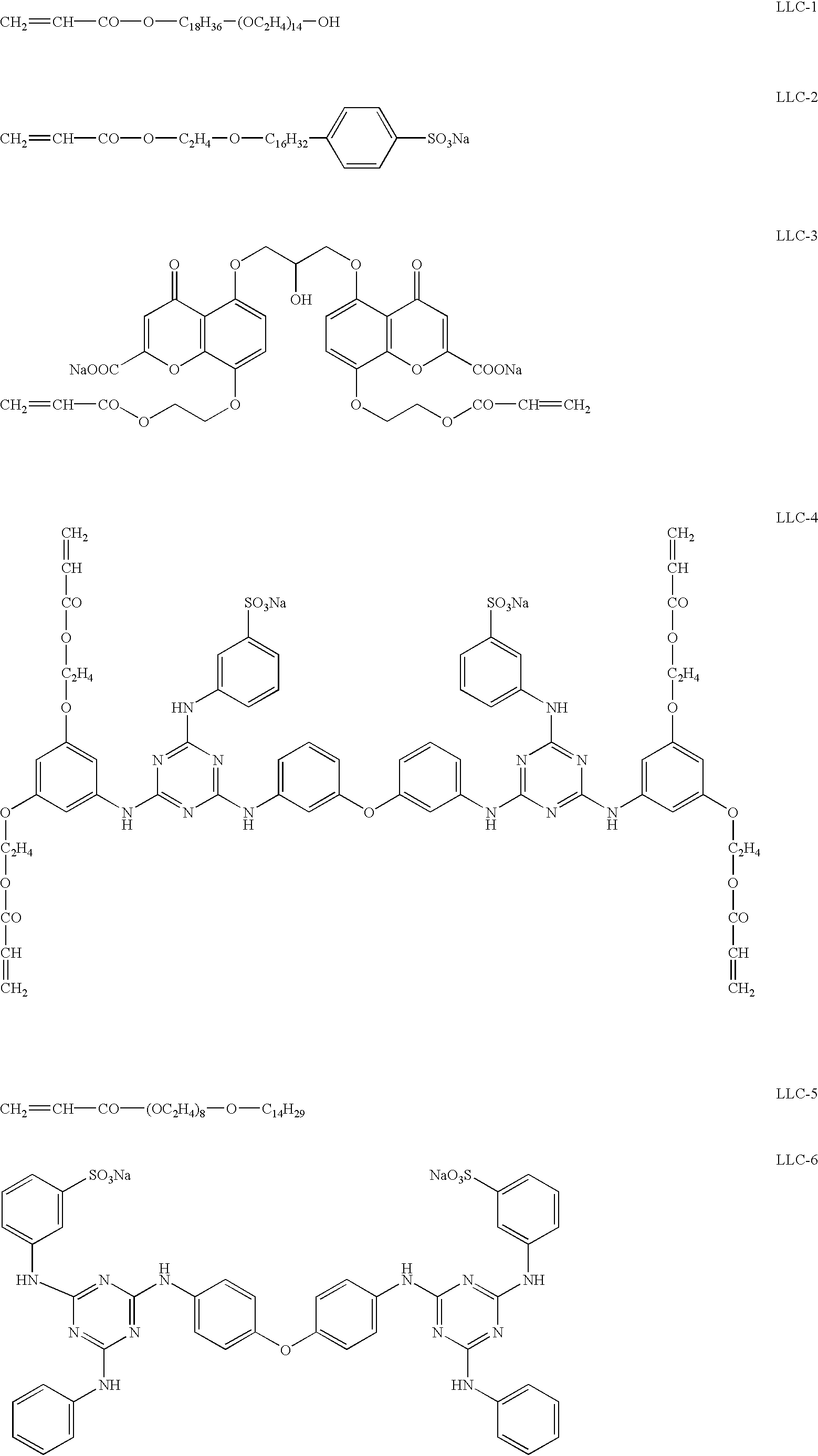Lyotropic liquid crystal composition
a liquid crystal composition and lyotropic technology, applied in the direction of instruments, polarising elements, transportation and packaging, etc., can solve the problems of difficult to fully reduce difficult to remove silver halide in glass, and small remains of opaque silver halide, etc., to achieve easy separation and removal
- Summary
- Abstract
- Description
- Claims
- Application Information
AI Technical Summary
Benefits of technology
Problems solved by technology
Method used
Image
Examples
example 2
Preparation of Lyotropic Liquid Crystal Composition
In 10 mL of distilled water, 5.0 g of the emulsion (EM-1) prepared in Example 1 and 0.1 g of lyotropic liquid crystal (LLC-1) were added and dissolved by stirring for 30 minutes at room temperature. While the solution was heated and kept at 40.degree. C., 1.3 mg of protease (Actinase E) was added and stirred for 3 hours. The solution was subjected to centrifugation to obtain a concentrated silver halide suspension. The suspension was dispersed in a 40% aqueous solution of lyotropic liquid crystal (LLC-1), and the dispersion was subjected to centrifugation. These dispersing and centrifuging processes were repeated five times to prepare a 40% aqueous solution (Ag-1) of lyotropic liquid crystal (LLC-1) stably dispersing rod-like silver halide grains.
Preparation of Optically Anisotropic Thin Film
Immediately after a photopolymerization initiator (Irgacure 907) was added to the above-prepared solution (Ag-1) in the amount of 2 wt. %, the ...
example 3
Preparation of Gelatin Dispersion Containing Tabular Silver Halide Grains
The following solutions A to D were prepared.
To the solution A, the solutions B and C in each amount of 64.1 ml were added at 35.degree. C. for 2 minutes according to the simultaneous mixing method by means of a mixer described in Japanese Patent Publication Nos. 58(1983)-58288 and 58(1983)-58289, to form nuclei.
After the addition of the solutions B and C was completed, the reaction liquid was gradually heated to 60.degree. C. for 60 minutes. While the temperature was kept at 60.degree. C., the solutions B and C were further added in each flow rate of 68.5 ml / minute for 50 minutes according to the simultaneous mixing method. During this process, the silver potential (measured with a silver ion selective electrode based on a comparison electrode of saturated silver-silver chloride electrode) was controlled to be +6 mV with the solution D. After the addition was completed, the pH was adjusted at 6 with 3% KOH. Im...
example 4
Preparation of Lyotropic Liquid Crystal Composition
In 10 mL of distilled water, 5.0 g of the emulsion (EM-2) prepared in Example 3 and 0.1 g of lyotropic liquid crystal (LLC-1) were added and dissolved by stirring for 30 minutes at room temperature. While the solution was heated and kept at 40.degree. C., 1.3 mg of protease (Actinase E) was added and stirred for 3 hours. The solution was subjected to centrifugation to obtain a concentrated silver halide suspension. The suspension was dispersed in a 40% aqueous solution of lyotropic liquid crystal (LLC-1), and the dispersion was subjected to centrifugation. These dispersing and centrifuging processes were repeated five times to prepare a 40% aqueous solution (Ag-2) of lyotropic liquid crystal (LLC-1) stably dispersing tabular silver halide grains in the amount of 10 wt. %.
Preparation of Optically Anisotropic Thin Film
Immediately after a photopolymerization initiator (Irgacure 907) was added to the above-prepared solution (Ag-1) in th...
PUM
| Property | Measurement | Unit |
|---|---|---|
| aspect ratio | aaaaa | aaaaa |
| aspect ratio | aaaaa | aaaaa |
| aspect ratios | aaaaa | aaaaa |
Abstract
Description
Claims
Application Information
 Login to View More
Login to View More - R&D
- Intellectual Property
- Life Sciences
- Materials
- Tech Scout
- Unparalleled Data Quality
- Higher Quality Content
- 60% Fewer Hallucinations
Browse by: Latest US Patents, China's latest patents, Technical Efficacy Thesaurus, Application Domain, Technology Topic, Popular Technical Reports.
© 2025 PatSnap. All rights reserved.Legal|Privacy policy|Modern Slavery Act Transparency Statement|Sitemap|About US| Contact US: help@patsnap.com

